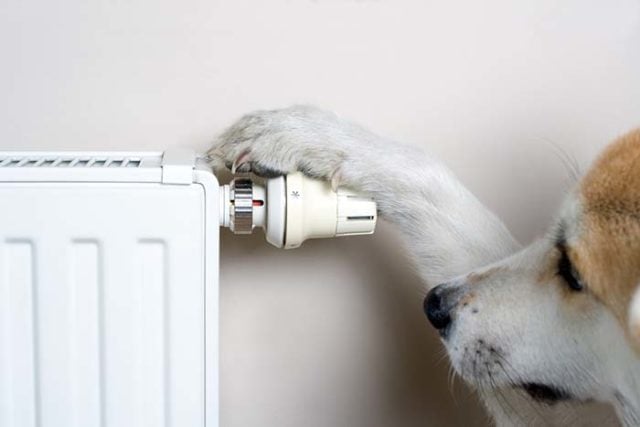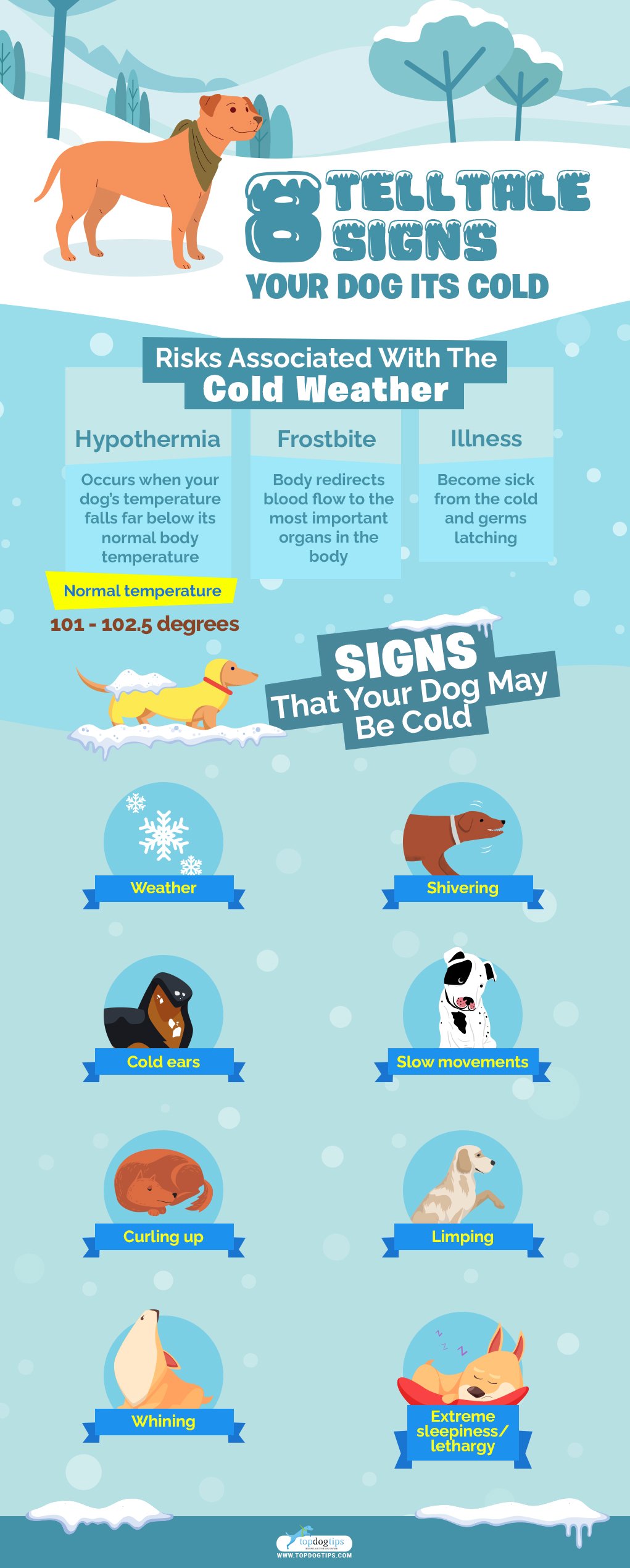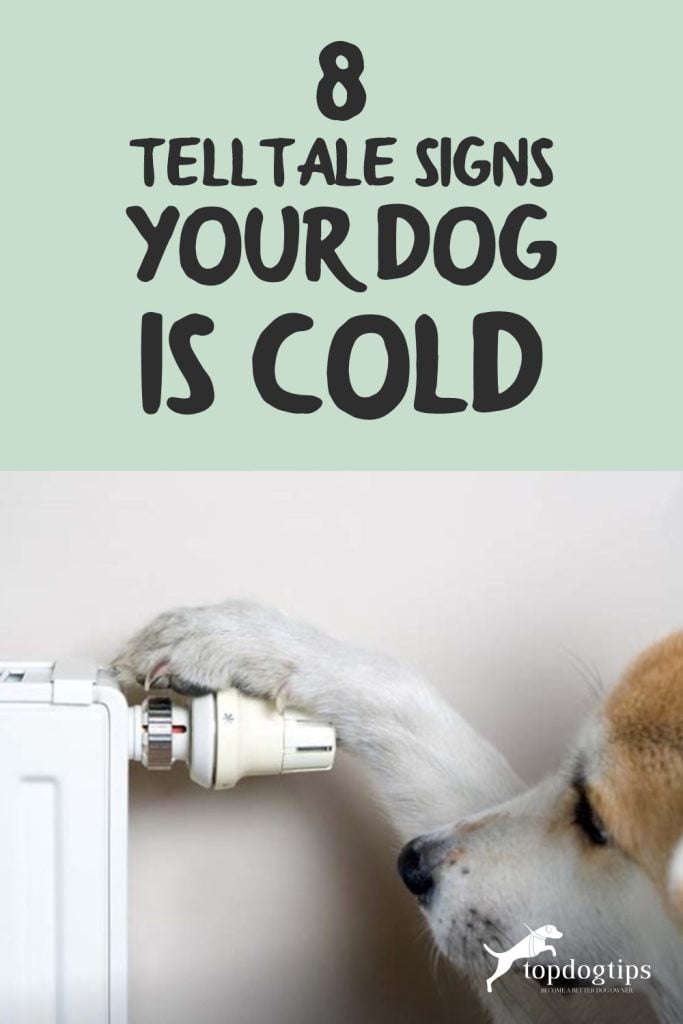
Table of Contents
Do you know the dangers that come with cold weather and how to tell if your dog is cold? Our domesticated dogs depend on us to keep them safe from the environment, which involves providing a dog with warmth.
When your dog is cold, they will show you signs to let you know they need to be warmed up.
Contrary to popular belief, dogs do get cold far more often than many pet owners assume. Just because the dog has a furry coat doesn't mean he's completely protected from cold temperatures.
They may handle the mild cold for a short period of time, but eventually, your pooch will be cold, and you need to watch out for the signs to avoid further complications.
Here's how to tell if your dog is cold and the risks of allowing your dog to get to that point.

ALSO READ: 5 Best Dog Coats for Dogs in Winter Cold
How to Tell If Your Dog Is Cold
Risks Associated With The Cold Weather
Regardless of how much fur your dog has, he's still susceptible to cold weather. Dogs do get cold, hazardous for smaller dogs or dogs with short, thin hair.
Even dogs with thick fur will feel the effects of cold weather if their fur becomes wet or stay in the cold for a prolonged time.
Hypothermia. Most often, when dogs are exposed to the cold for too long, they are at risk for hypothermia.
Hypothermia occurs when your dog’s temperature falls far below its normal body temperature.
Dog's normal body temperature is around 101 to 102.5 degrees Fahrenheit.
When a dog has hypothermia, its temperature falls between 95 to 99 degrees. Hypothermia can be deadly to dogs, so it is important to be careful and watch out for its signs, and know how to tell if your dog is cold.
Frostbite. This is another risk associated with cold weather. Frostbite occurs when the body redirects blood flow to the most important organs in the body.
This leaves the dog's tail, legs, paws, nose, and ears at risk. If any of those parts of the body is bright red or black, your dog could be suffering from frostbite and should be warmed up immediately.
Illness. Dogs can become sick from the cold. The cold weather itself won’t make your dog sick, but it creates an environment for germs to latch onto your dog.
Most dogs show a cold with sneezing, weakness, and discharge from the eyes and nose. Those are signs of dog cold or dog flu, canine influenza, or other illness.
8 Clear Signs That Your Dog May Be Cold
 Here are some of the things to look out for, how to tell if your dog is cold in those conditions and the best way to avoid letting your dog getting cold.
Here are some of the things to look out for, how to tell if your dog is cold in those conditions and the best way to avoid letting your dog getting cold.
1. Weather.
The most important thing to look out for is how cold it is outside. If it is too cold for you to be outside, it is too cold for your dog to be outside.
Yes, your dog has fur, but you more than likely have a coat on. If you feel cold even with a coat on, your dog feels cold even with its fur.
Even with fur, some dogs will still feel extremely cold when outside in the cold. Regardless, your dog should not be left outside alone during cold weather.
2. Shivering.
Dogs show a visible reaction to the cold. If your dog is shivering or trembling, it is likely too cold to be outside.
Excessive shaking is another way your dog shows signs that it may be too cold. Don't let your dog stay in the cold the minute you see him shivering and trembling; bring him into warmth.
3. Cold ears.
Even when dogs are cold, their body may feel warm to the touch due to fur. If you don't know how to tell if your dog is cold or are unsure if he is, feel their ears.
When their ears feel cold, particularly around the edges, it is time to bring your dog inside.
If their body feels cold to the touch, they are definitely cold and should be brought inside immediately. It would be ideal for offering your dog a blanket once they are inside.
4. Slow movements.
Another good tip on how to tell if your dog is cold is to observe his movements. Your dog will look like they don’t want to be outside when they are feeling cold. You will see your pooch walking slowly.
If you are outside with your dog and notice that they are attempting to hide behind or under different objects, they are likely attempting to shelter themselves from the cold.
If you notice these signs with your dog, it is time to go inside.
5. Curling up.
When dogs are cold, they attempt to warm themselves up with their body heat.
If you notice your dog curling up into a ball when outside or is hunched over with their tail tucked in, they are very likely cold.
When you notice this, it would be wise to take your dog indoors to warm up as soon as possible.
6. Limping.
A dog’s paws are susceptible to cold weather, and you must always take precautions to care for your dog's paws.
If your dog's paws are unprotected and the ground is colder than the air, your canine will get cold much quicker.
When your dog starts to limp, they are trying to tell you that their paws are too cold, and it is a sign that your dog is too cold.
You can always get your dog booties to keep him warmer for longer.
7. Whining.
When dogs become uncomfortable due to the cold, they will attempt to let you know. They may do so by whining, whimpering, or barking.
If your dog starts behaving abnormal without any clear reason, consider if they may be exposed to too much cold or wind chill.
Cold dogs may look agitated or anxious. You should help your dog warm up if you notice these signs.
8. Extreme sleepiness/lethargy.
 Finally, another clear sign on how to tell if your dog is cold is if your dog appears to be extremely sleepy or lethargic, and this could be very serious.
Finally, another clear sign on how to tell if your dog is cold is if your dog appears to be extremely sleepy or lethargic, and this could be very serious.
This is most likely a sign of hypothermia, not just your dog being cold. Another sign of hypothermia is clumsiness.
When you notice this, you need to bring your dog inside immediately so he can warm up.
Take your dog to the veterinarian or call a vet immediately if he is stiff, has a hard time breathing, or is barely moving. Taking quick action can save your dog’s life.
Winter months can be hard on your dog, and things can become dangerous quickly if you aren’t paying attention.
The steps mentioned above should help you know when your dog is too cold, and if you notice these signs, you should take steps to warm them up immediately.
Being in the cold for too long can lead to frostbite or hypothermia, which can be fatal.
During the winter, dogs should not be left alone outside, and if you do, make sure they have a shelter like a dog house with a heater.
Common Questions about How Dog Owners Can Tell If their Canine Is Cold
If you are still concerned about keeping your dog warm, the following answers to common questions should help.
How Do I Know If My Dog Is Cold in the House?
Some signs of a cold dog include a hunched posture and tucked tail, shivering or shaking, seeking shelter, not wanting to walk, and whining or barking.
It would help if you also looked out for changes in behavior and your pup trying to lift his paws off the ground.
Do Dogs Get Cold at Night?
Some dogs may get cold at night, especially those with thin coats. If you are worried about this, give your dog a blanket he can snuggle into.
Most owners won't have to worry. Most dogs won't get cold at night. If they do, they will find somewhere warmer in the house or show you other signs of a chilly dog.
How Is Cold Too Cold for a Dog?
Most dogs will be fine until the temperature drops to 45 degrees or lower. At this point, only some cold-averse dog breeds may start to feel chilly. Most dogs will still be fine.
READ NEXT: Cold Weather Preparation for Dogs













